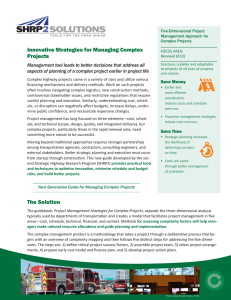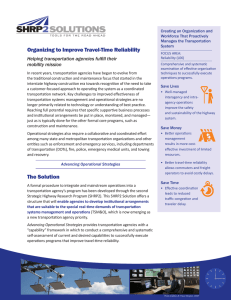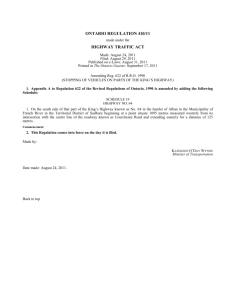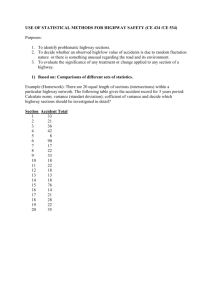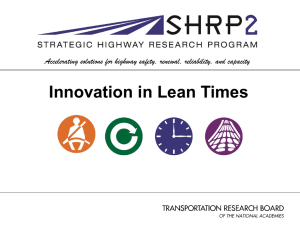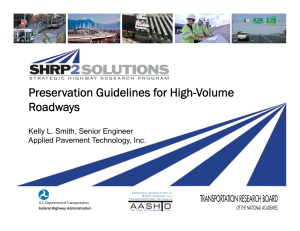Managing Risk on Rapid Renewal Projects
advertisement
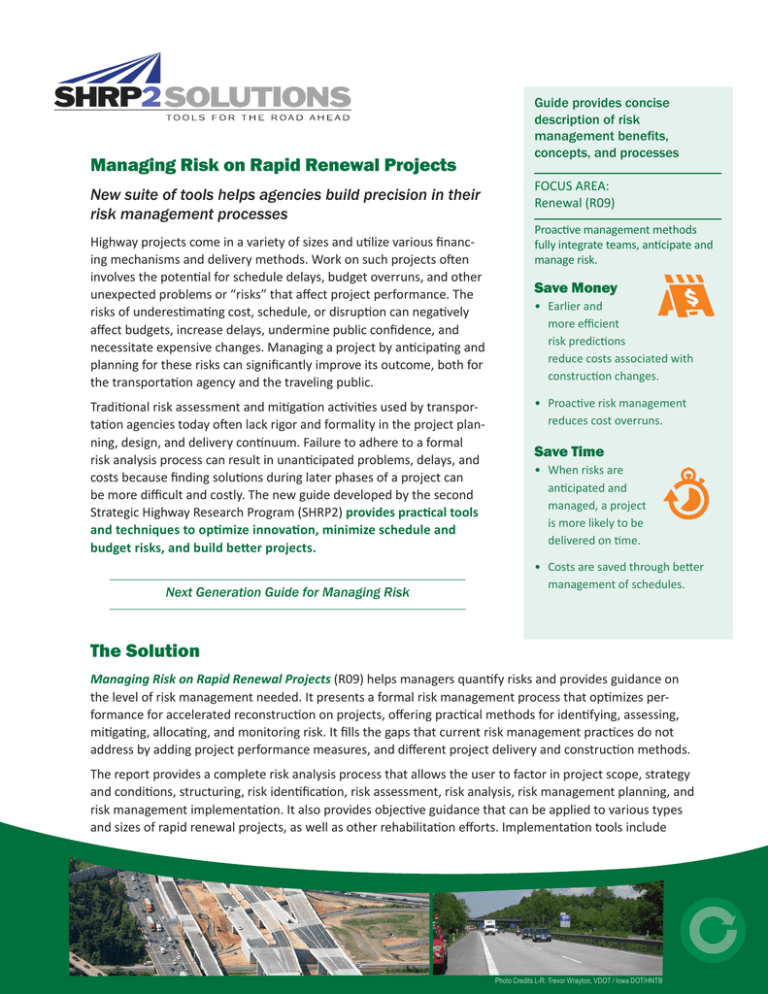
Managing Risk on Rapid Renewal Projects New suite of tools helps agencies build precision in their risk management processes Highway projects come in a variety of sizes and utilize various financing mechanisms and delivery methods. Work on such projects often involves the potential for schedule delays, budget overruns, and other unexpected problems or “risks” that affect project performance. The risks of underestimating cost, schedule, or disruption can negatively affect budgets, increase delays, undermine public confidence, and necessitate expensive changes. Managing a project by anticipating and planning for these risks can significantly improve its outcome, both for the transportation agency and the traveling public. Traditional risk assessment and mitigation activities used by transportation agencies today often lack rigor and formality in the project planning, design, and delivery continuum. Failure to adhere to a formal risk analysis process can result in unanticipated problems, delays, and costs because finding solutions during later phases of a project can be more difficult and costly. The new guide developed by the second Strategic Highway Research Program (SHRP2) provides practical tools and techniques to optimize innovation, minimize schedule and budget risks, and build better projects. Next Generation Guide for Managing Risk Guide provides concise description of risk management benefits, concepts, and processes FOCUS AREA: Renewal (R09) Proactive management methods fully integrate teams, anticipate and manage risk. Save Money •• Earlier and more efficient risk predictions reduce costs associated with construction changes. •• Proactive risk management reduces cost overruns. Save Time •• When risks are anticipated and managed, a project is more likely to be delivered on time. •• Costs are saved through better management of schedules. The Solution Managing Risk on Rapid Renewal Projects (R09) helps managers quantify risks and provides guidance on the level of risk management needed. It presents a formal risk management process that optimizes performance for accelerated reconstruction on projects, offering practical methods for identifying, assessing, mitigating, allocating, and monitoring risk. It fills the gaps that current risk management practices do not address by adding project performance measures, and different project delivery and construction methods. The report provides a complete risk analysis process that allows the user to factor in project scope, strategy and conditions, structuring, risk identification, risk assessment, risk analysis, risk management planning, and risk management implementation. It also provides objective guidance that can be applied to various types and sizes of rapid renewal projects, as well as other rehabilitation efforts. Implementation tools include Photo Credits L-R: Trevor Wrayton, VDOT / Iowa DOT/HNTB spreadsheets that lead the user through a risk analysis process and a two-day training course that includes instruction on the risk management process and allows participants to apply principles in a case study activity. The Benefits The benefits of improved risk management through the use of this product all focus on improved project performance. This product can be applied to highway projects of varying sizes and types to help project managers proactively identify, plan for, assess, and manage their projects to reduce the risk of schedule and cost impacts. This product will help transportation agencies better anticipate and understand the range of performance outcomes that may occur during a project’s life cycle. A better understanding of the potential risks leads to better financial management of agency capital budgets, fewer changes due to unanticipated issues, and more disciplined decision making regarding crucial project matters in the context of all other risks. Who is using these tools? Managing Risk in Rapid Renewal Projects was one of several SHRP2 products selected for 2013 FHWA/AASHTO Implementation Assistance Program. In the first round, two “proof of concept” incentives were awarded: the Florida Department of Transportation (DOT) for its Gateway Express Project and the Georgia DOT for its SR 96 Corridor Project. The risk assessment workshops were also piloted during the research phase. Representatives from Washington, Minnesota, Nevada, Virginia, and North Carolina participated. How can you learn more? The Guide for the Process of Managing Risk on Rapid Renewal Contracts is available at http://www.trb.org/main/ blurbs/168369.aspx. For information, contact Carlos Figueroa at FHWA, carlos.figueroa@dot.gov, or Keith Platte, kplatte@aashto.org. Updates on current implementation efforts can be found at www.fhwa.dot.gov/GoSHRP2 or http://SHRP2.transportation.org. About SHRP2 Implementation The second Strategic Highway Research Program is a national partnership of key transportation organizations: the Federal Highway Administration, the American Association of State Highway and Transportation Officials, and the Transportation Research Board. Together, these partners conduct research and deploy products that will help the transportation community enhance the productivity, boost the efficiency, increase the safety, and improve the reliability of the Nation’s highway system. Strategic Highway Research Program U.S. Department of Transportation | Federal Highway Administration American Association of State Highway and Transportation Officials ● Transportation Research Board TBG041112181811WDC
